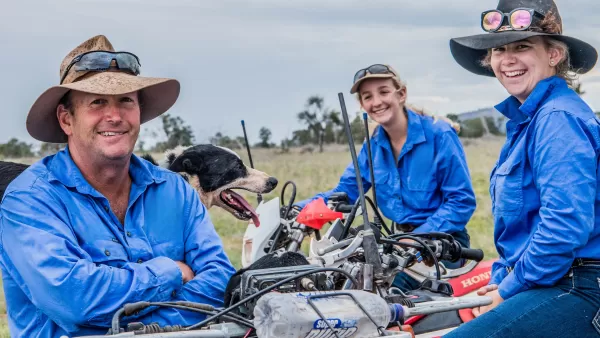Elimbah Nursery
Energy Savings: 11% | Cost Savings: $2,985 | Capital Cost: $20,000 | CO2 Savings: -0.6 | Project Status: Proposed
Industry:
Nursery and garden
Location:
South-East
Pump Type:
Not applicable
Irrigation Type:
Not applicable
Technology:
Heating
Greenstock Nurseries is a family business committed to offering a vast range of plants including re-vegetation species, Standard Trees, Tropical, ‘Oz breed’ & Green wall species. The company is dedicated to continuous improvement in their two Queensland sites.
Greenstock nursery uses around 136,000 kWh of electricity per year. The site is within the Energex electricity network area. The site’s electricity retailer charges the nursery for consumption (kWh), peak demand (kW) and daily or fixed charges, with a total annual cost of around $24,800. The nursery also uses over 3,000 litres of LPG at a cost of around $4,500 per annum.
The estimated Carbon Dioxide equivalent (CO2-e) emissions associated with electricity consumption and LPG usage were calculated as 99.5 tonnes (for scope 2) and 5 tonnes (for scope 1), respectively.
The nursery has three solar systems, each with 30kW inverters, installed on the roofs of two buildings. Electricity generated by these systems is mainly used on-site, with only around 1,800 kWh per year exported to the electricity grid indicating high utilisation.
The main energy use on the site is irrigation and water heating with some other processes such as potting and office areas.
Water used for irrigation purposes is sourced from rainwater collected in a dam. Irrigation water is distributed throughout the nursery via two pumps operating in parallel. A second dam collects harvested which is pumped top the main dam via solar pump.
Energy Use Breakdown
Understanding the share of energy consumption, allows to focus on critical parts of the system for the energy management strategy.
The breakdown of the electricity usage shows that the irrigation pump and the hot water systems are the largest energy consumers.
Irrigation Efficiency:
Although the irrigation pumps are the larger energy consumer at the nursery, they were found to be working properly and efficiently.
Hot Water System
The energy audit recommended installing a heat pump capable of meeting the maximum demand currently serviced by two LPG instantaneous boilers.
The propagation area has a heating system which includes a heat pump and two LPG instantaneous boilers. Nursery management has noted that the existing heat pump struggles to meet heating demands during peak periods, resulting in the installation of a gas heater to supplement heating capacity.
The implementation of a heat pump to replace the current LPG heaters at Greenstock Nurseries would represent a significant opportunity to improve energy efficiency and reduce operational costs.
The selected heat pump should have sufficient capacity to provide hot water at 40°C during the day and at night, to meet the requirements of the propagation areas.
The estimated cost to implement the heat pump is $20,000 with a payback of around 6.7 years as shown in Table 1.
Table 1. Estimated Savings from Heat Pump Project.
Recommendation | Annual Energy Savings (kWh/p.a) | Annual Cost Savings ($) | Emission Savings (tCO2-e) | Estimated cost to implement ($) | Payback Period (years) |
Replacement of the gas boilers with HW Heat pump | 15,330 | $2,985 | -0.6 | 20,000 | 6.7 |
Implementing this recommended upgrade will reduce energy consumption and operating costs, increasing a small amount of greenhouse gas emissions. This perfectly aligns with Greenstock Nurseries' commitment to environmental stewardship and positions them as leaders in sustainable agricultural practices.
Energy Audits
The farm had a Type 2 energy audit as a participant in the QBEST Ag program.
The QBEST Ag program was being delivered by the Queensland Farmers’ Federation and funded by the Queensland Government.
